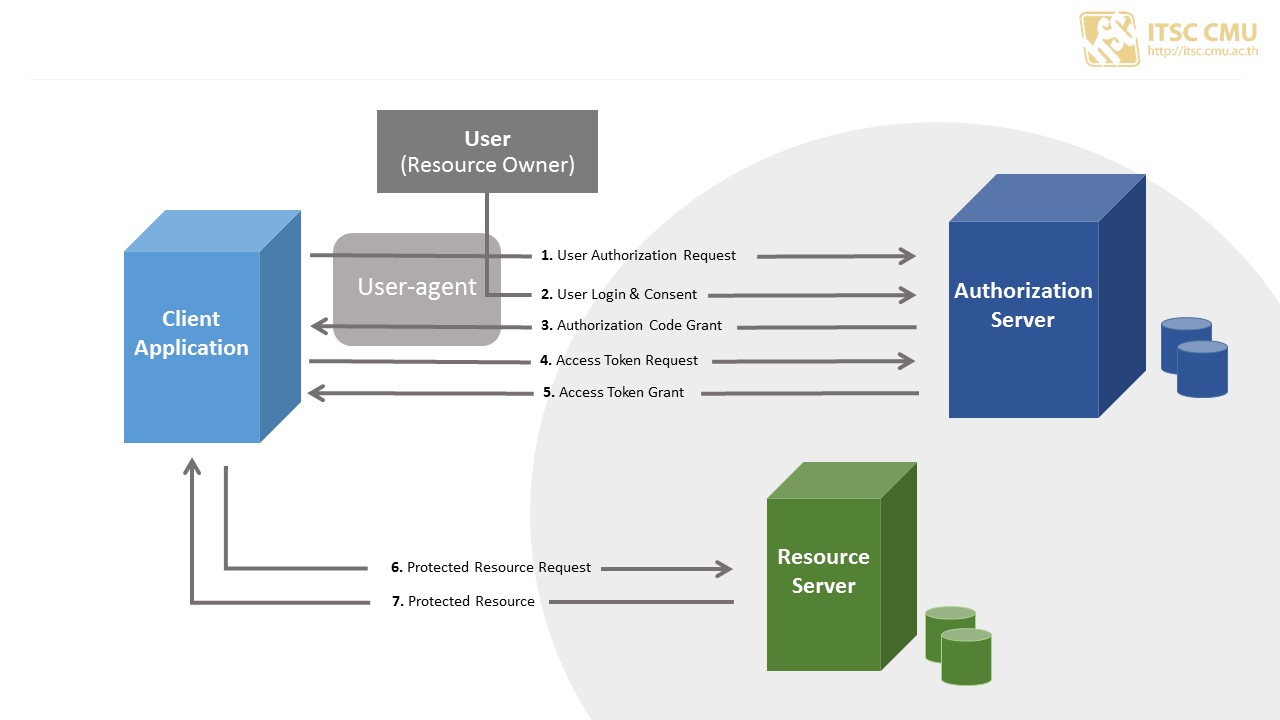CMU OAuth Angular TypeScript
From CMU ITSC Network
Introduction
Authorization Code Flow

from CMU OAuth Authorization Code Grant
Authorization Code Grant for Angular TypeScript
หลังจากทำการ Login with CMUOAuth เรียบร้อยแล้วระบบจะทำการส่ง authorization code กลับมาในรูปแบบ callback?code=[authorization_code] ดังตัวอย่าง
เมื่อ login เสร็จระบบจะ redirect ไปยังหน้า client application ดังรูปข้างต้น จากนั้นทำการนำ authorization_code จากหน้า request.component.ts ส่งไปขอ Token ในหน้า token-interceptor.service.ts หลังจากนั้นให้เก็บ token ไว้ใน sessionStorage จากหน้า auth.service.ts
- request.component.ts
constructor(private http: HttpClient, private router: Router, handler: HttpBackend, private auth: AuthService, private location: Location) { this.http = new HttpClient(handler); }
ngOnInit() { const str = this.router.url.split('='); const url = (str[1]); this.http.get('https://yourclientapplication.com/callback?code=' + url) .subscribe(res => { this.auth.setToken(res); this.location.go('accounts'); this.reload(); }); } public reload(): any { location.reload(); }
- auth.service.ts
@Injectable() export class AuthService { constructor(private router: Router) { } getToken() { return sessionStorage.getItem('accessToken'); } setToken(res) { sessionStorage.setItem('accessToken', res.access_token); }
- token-interceptor.service.ts
@Injectable() export class TokenInterceptorService implements HttpInterceptor { constructor(private authservice: AuthService) { } intercept(req: HttpRequest<any>, next: HttpHandler): Observable<HttpEvent<any>> {
const idToken = this.authservice.getToken(); if (idToken) { const cloned = req.clone({ headers: new HttpHeaders({ Authorization: `Bearer ${idToken}` }) }); return next.handle(cloned).pipe(catchError((err) => { if ([403, 401].indexOf(err.status) !== -1) { this.authservice.logoutUser(); location.reload(true); } return throwError(err); })); }
เมื่อทำการขอ access token สำเร็จ ระบบจะส่งค่า token กลับคืนมาดังนี้
